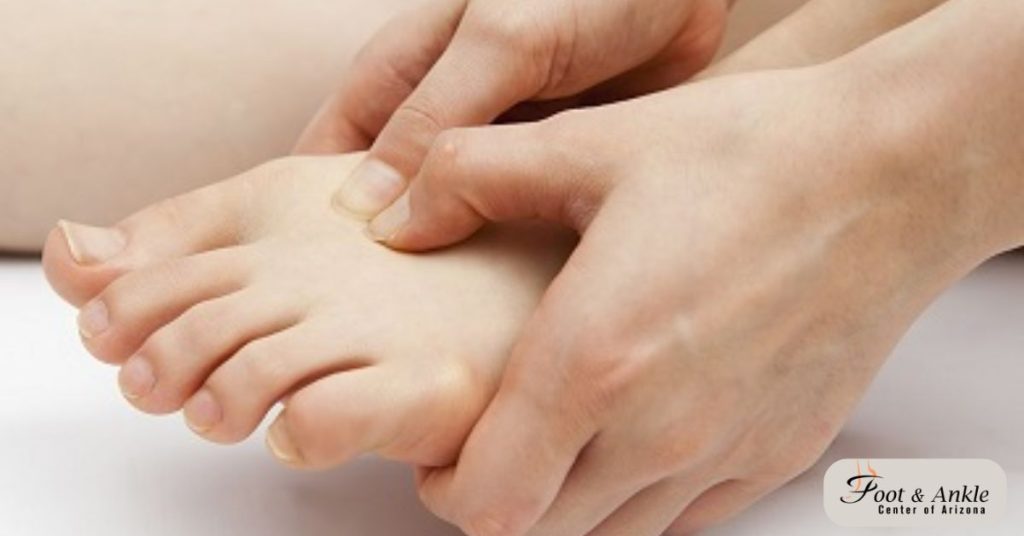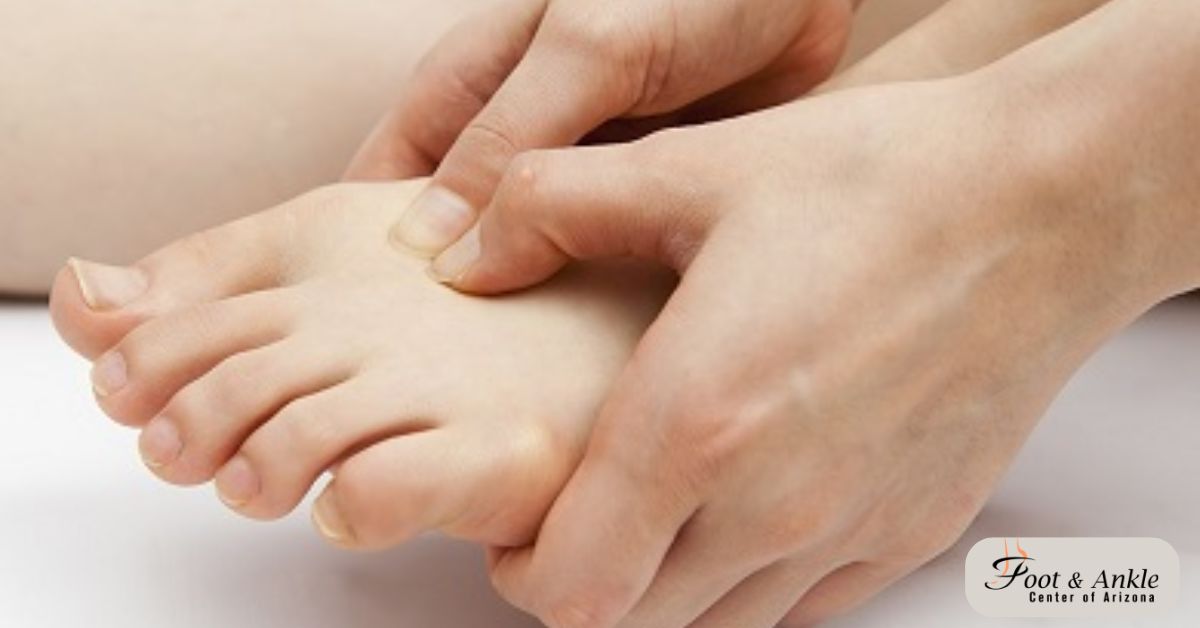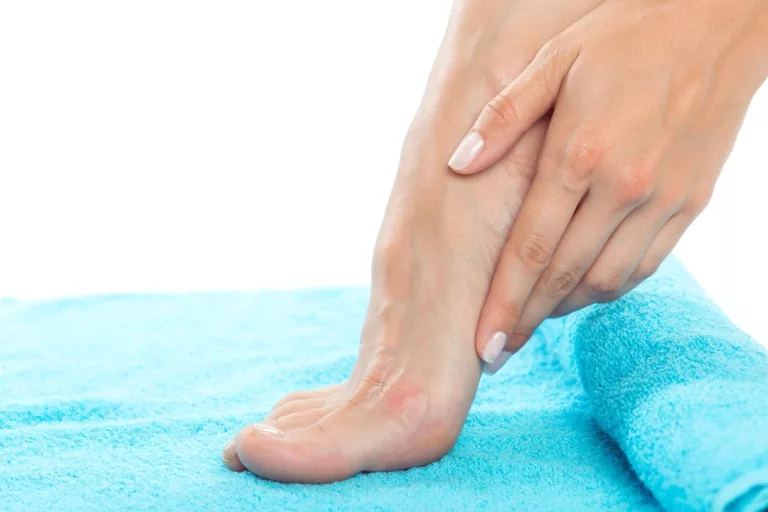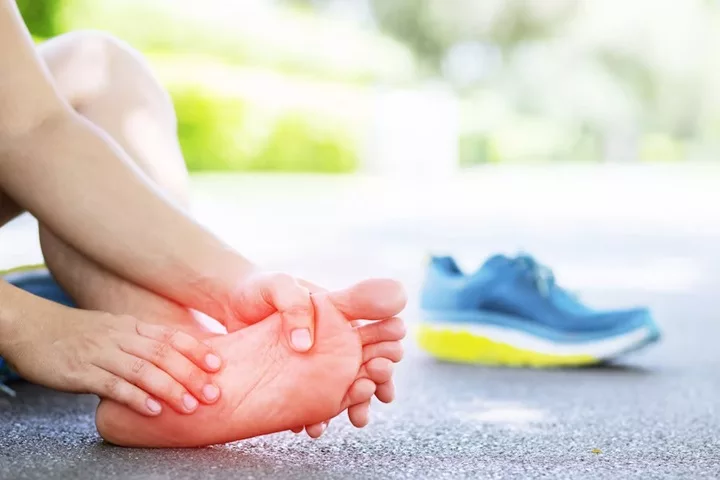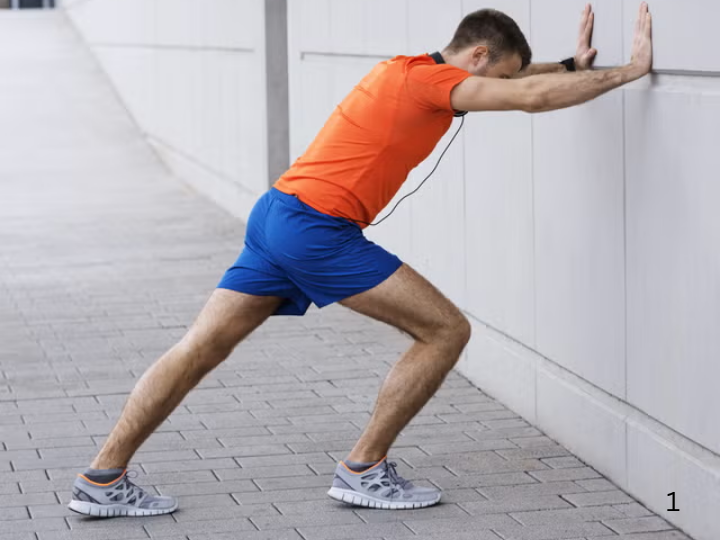How to Get Rid of Pain on Top of Foot: The human foot is one of the engineering marvels. It comprises 26 bones, 33 joints, and well over 100 muscles, tendons, and ligaments that support the entire body and are capable of producing complicated movements. The dorsum, or top of the foot, is made from the metatarsal bones and is supplied by extensor tendons, including the extensor digitorum longus and the extensor hallucis longus. Ligaments, like the dorsal tarsometatarsal ligaments, give stability to the joints, with blood vessels including the dorsal pedal artery supplying oxygen and sensation. Common pathologies include tendonitis, stress fractures, and nerve compression, often resulting from overuse or poor-quality shoes.
Understanding Pain and Treatment
Such anatomy would explain the source of pain and therefore appropriate treatment strategies. Be it a strained tendon, a hairline fracture in a metatarsal, or irritated nerves, each part of the foot’s structure plays its role in overall functioning and potential for discomfort.
Common Causes of Pain on the Top of the Foot
Pain on top of the foot may be caused by several factors, many of which have their own set of symptoms and risk factors. Knowing common causes is important for appropriate diagnosis and treatment.
Description and symptoms Tendonitis: This is the inflammation of a tendon usually resulting from overuse or injury. In the top of the foot, extensor tendons are most commonly affected. Characteristic symptoms are pain, swelling, and flexion difficulty of the foot upwards or moving toes. The pain worsens on activity and is relieved by rest.
Common causes and risk factors:
- Repetitive movements, especially in sports like running or dancing
- Sudden increase in activity level or training intensity
- Improper footwear that puts pressure on the tendons
- Age, as tendons become less flexible over time
- Certain medical conditions, such as rheumatoid arthritis or diabetes
Description and symptoms Stress fractures are small, hairline breaks in the bone that develop over time, usually caused by repetitive force. In the foot, they are most common in the metatarsal bones. Symptoms include localized pain that worsens with activity, swelling, and sometimes visible bruising. The pain might be relieved by rest, but it can recur with renewed activity.
Causes and contributing factors:
- High-impact activities, particularly in sports like basketball or track and field
- Sudden increase in exercise intensity or duration
- Osteoporosis or other conditions that weaken bones
- Improper footwear with inadequate shock absorption
- Nutritional deficiencies, especially in calcium and vitamin D
Extensor Tendonitis Description and symptoms: It is a specific type of tendonitis that involves the tendons running along the top of the foot to raise the toes. Thus, the symptoms involve pain and swelling along the top of the foot, difficulty in lifting toes, and pain caused by shoes.
Risk factors and causes:
- Tight-fitting shoes that put pressure on the top of the foot
- Activities that involve repetitive foot flexing, such as hill running or stair climbing
- Abnormal foot mechanics or high arches
- Trauma or direct injury to the top of the foot
Metatarsal Stress Description and symptoms: Metatarsal stress is the inflammation in the long bones of the foot that share a connection with symptoms such as aching or burning pain in the ball of the foot, which at times extends down towards the toes. The pain worsens with activity and sometimes is swollen or red.
Causes and prevention:
- Ill-fitting shoes, particularly those with a narrow toe box
- High-impact activities or sudden increases in exercise intensity
- Foot deformities like bunions or high arches
- Obesity, which puts extra stress on the feet
Problems with Shoes Effect of Poor Shoes: Poor or ill-fitting shoes form the basis for most syndromes of pain on top of the foot. Shoes that fit too tightly, that do not provide adequate support, and those with high heels may all contribute to a variety of foot problems.
How to identify problematic footwear:
- Shoes that cause pain or discomfort when worn
- Visible wear patterns indicating uneven weight distribution
- Insufficient room in the toe box, causing cramping of the toes
- Lack of arch support or cushioning
Injuries and Trauma Types of injuries that affect the top of the foot:
- Direct blows or impacts, such as dropping a heavy object on the foot
- Sprains from twisting or rolling the foot
- Overextension injuries from activities like dancing or martial arts
Symptoms and diagnosis:
- Sudden, intense pain following the injury
- Swelling, bruising, or deformity
- Difficulty bearing weight or moving the foot
- May require imaging tests like X-rays or MRI for proper diagnosis
These are common causes of top-of-foot pain. Knowing about these can help in pointing out exactly what is going wrong and leading to proper treatment. Some of these conditions may easily be treated by rest and home care, while others require professional medical intervention.
Diagnosing the Pain
Diagnosis of top-of-the-foot pain requires an accurate assessment to achieve appropriate treatment. Most of the time, it will include both professional medical evaluation and self-assessment techniques.
Medical Evaluation It is necessary that one with continuous or severe pain in the top of the foot seek help from the doctor. A doctor, podiatrist, or orthopedic specialist will assess the situation based on the history of the patient, symptoms, and physical examination findings. Such professional assessment rules out serious conditions and institutes appropriate treatment.
Common diagnostic tests:
- X-rays: Imaging tests may be an initial means of diagnosing what exactly the cause of the pain is. They can indicate fractures, arthritis, and other bone abnormalities.
- Magnetic Resonance Imaging (MRI): This is a non-invasive test that will give highly detailed pictures of soft tissues, which include tendons, ligaments, and muscles. It is useful in diagnosing soft tissue injuries or stress fractures that may not otherwise be seen on an X-ray.
- Ultrasound: Ultrasound is a nonionizing imaging modality that uses sound waves to generate real-time images of soft tissues. This helps in diagnosing tendon injuries and guiding injections if needed.
- CT (Computed Tomography) Scan: Infrequently used in foot pain, but these offer great detailed 3D images of the bones and joints that might become important if a patient has a complex fracture or arthritis.
Self-Assessment Techniques While professional medical evaluation is crucial, self-assessment can help you better understand your symptoms and determine when to seek help.
Recognizing symptoms and patterns:
- Keep a pain journal: Record the timing of the pain, its degree of severity, and which activities may provoke it or make it better.
- Watch for visual changes: Observe for swelling, redness, or bruising on top of the foot.
- Check the range of motion: Gently flex and extend your foot and toes. Look for any limitation or pain in these movements.
- Recent changes: Consider any new activities, shoes, or injuries that may have been timed at the beginning of pain.
When to seek professional help:
- Pain persists for more than a few days despite rest and home care
- Severe pain, swelling, or bruising
- Inability to bear weight on the affected foot
- Signs of infection, such as warmth, redness, or fever
- Pain that interferes with daily activities or sleep
- History of diabetes or peripheral neuropathy, which can complicate foot conditions
Integrating professional medical assessment with self-assessment techniques can help you fully understand what exactly is causing the pain in your feet. In this way, it may be quite valuable information to have while coming up with an effective treatment plan or avoiding future problems. Keep in mind that though self-diagnosis is valuable, it should not replace professional medical advice, especially when the pain is sharp or persists.
Treatment and Management Strategies
Treatment plans can then be developed to address the cause of pain on top of the foot. There are many treatment strategies, often combined, based on the specific condition being treated and the needs of the individual.
Rest and Immobilization Importance and methods of rest: Rest is often the first line of treatment for many foot conditions. This allows injured tissues time to heal and reduces further stress on the area that is affected. Duration and extent depend on the degree of the condition.
Methods of rest include:
- Modification or temporary avoidance of activities that increase the pain
- Using crutches or cane to minimize weight bearing on the affected foot.
- Elevate the foot below the level of the heart while sitting or lying down to reduce swelling.
Immobilization by splints or braces: These can be used to support the affected part and give some feeling of protection in some cases.
- Foot splints can limit motion and provide support during healing.
- More serious injuries or fractures may require walking boots or cast shoes.
- These night splints are helpful in conditions that present at the top of the foot, such as plantar fasciitis.
Benefits of Ice for Inflammation Ice therapy is most effective during the acute phase of injury or flare-ups of a chronic condition. It is an effective way to reduce inflammation, swelling, and pain.
How to apply ice:
- Apply an ice pack wrapped in a thin towel, protecting the skin
- For 15-20 minutes at a time, several times a day
- Never apply ice directly to the skin; tissue damage may result.
When and how to use heat: Heat therapy is generally more helpful for chronic conditions or after the acute phase of an injury. It relaxes the muscles, enhances blood flow, and enables better flexibility.
How to apply heat:
- Use a heating pad or warm compress
- Apply for 15-20 minutes at a time
- Take care with temperature – avoid burns
Pain Relief Medications Over-the-counter options: NSAIDs are nonsteroidal anti-inflammatory drugs, like ibuprofen or naproxen, which lower pain and decrease inflammation. Particularly, they may be helpful in diseases where there is an inflammatory component to the disorder, such as tendonitis.
Prescription medications: If pain is more serious or there are certain conditions, a doctor may prescribe bigger pain relievers or focused medications. They could include the following:
- Prescription-strength NSAIDs
- Short-term use of opioids for very bad pain
- Corticosteroids for large inflammation
Physical Therapy Types of Exercises and Stretches: Since physical therapy is the main key to recovery and preventing further injury, the work of a physical therapist will be to design a program specific to your condition. This may include:
- Exercises that increase flexibility in the foot and ankle
- Strengthening of the musculature around the foot
- Balance and proprioception exercises to enhance stability
- Gait training for normalization of abnormal walking patterns
Role of PT in recovery: PT helps in not only recovering from the injury but also in preventing re-injury by:
- Improving general strength and flexibility of the foot and ankle
- Correcting any biomechanical imbalances which predisposed the patient to injury
- Teaching the patient proper foot care and how to prevent injuries
Shoe Modifications Proper Shoes During Treatment and Prevention: It is extremely relevant that proper shoes play a huge role in both the treatment and prevention of pain in the foot. Properly fit shoes offer support, cushioning, and protection for the feet.
Recommendations for supportive shoes:
- The toe box should be large enough for the movement of toes.
- Arch support depends on your foot type.
- Shoes should have good shock absorption, mostly in those high-impact activities
- No high-heeled shoes or those that squeeze any part of the foot
- Replace the shoes regularly, mostly in athletic shoes, because they lose their support over some time
Treatment modalities and management strategies can considerably decrease pain on the top of the foot and promote healing if they are administered appropriately. It is crucial to collaborate with healthcare professionals on a treatment plan that is tailor-made and unique to you, considering your condition and needs. More often than not, one should remember that healing takes time, and continuous efforts to follow the treatment plan will yield positive results in recovery.
Preventing Pain in the Future
Keeping the ball of the foot pain-free is also important in maintaining good overall health of the foot and in preventing the return of past problems. Good foot care, smart and careful selection and use of proper fitting shoes can help to reduce your chances of experiencing future foot pain.
Shoe Selection Features to look for in a supportive and properly-fitting shoe:
- Adequate width in the toe box to accommodate toe movement
- Appropriate arch support, based on the nature of your foot: flat, neutral, or high arch
- Cushioned sole for shock absorption
- A firm heel counter that provides stability
- Flexibility in appropriate areas, usually at the ball of the foot
- Breathable materials to reduce moisture and chances of fungal infection
Common mistakes in selecting shoes:
- Fashion over function
- Tight shoes or too-loose shoes
- Be especially careful of high-heeled shoes, which put too much pressure on the front of your feet
- Do not assume that your shoe size has remained the same since your teenage years; feet often change in size
Wear properly fitting, no distressed shoes, especially for sports activities Stretching and Exercise The following exercises are good for your feet: Toe raises: Slowly raise up onto your toes. Keep your heel on the floor
Toe curls: Curl your toes down as if you are picking up a small marble
Ankle rotations: Slowly rotate your ankles first clockwise and then counterclockwise
Calf raises: Standing on the edge of a step, raise your heels
Foot Care Practices Daily tips for good foot care include washing the feet daily with soap and water and drying thoroughly, paying special attention to the area between the toes. Moisturize, but do not put lotion between the toes. The toenails must be trimmed straight across since ingrown toenails may result if they are cut at an angle. Always wear clean, dry socks that are moisture-wicking and alternate your shoes daily so that each pair can dry completely. Put foot powder in your shoes if you sweat profusely in your shoes.
Check for any unusual changes or signs of problems regularly in your feet
Need for regular checkups:
Have an annual foot examination by a podiatrist if you have diabetes or any other medical condition that involves the foot
- Report any pain or change of the foot to avoid minor problems turning into major ones
- Seek professional advice about proper foot care as per your needs
- Other prevention includes
- Maintain a healthy weight to put less stress on your feet
Keeping soft tissues in the feet healthy and supple is important, so stay hydrated. Warm-up before exercise and cool-down afterwards. Introduce changes in intensity and duration of physical activity gradually to avoid overuse injuries. Consider cross-training to shift stress in different parts of your feet and your body. Use proper technique in sport and exercise to put less unnecessary stress on your feet. Be body-aware when walking and standing to ensure that your weight is distributed evenly.
Making these preventive measures part of your daily routine will significantly reduce the possibility of pain on the top of the foot developing in the first place. Keep in mind that prevention is always much easier and more effective than treatment. The payback for diligent attention to health in the feet comes in terms of better all-round sense of well-being and quality of life. Seek a consultation with a podiatrist or health professional for general advice regarding your feet, or if you have special problems or diseases related to feet.
When to Seek Help
While most cases of pain in the top of the foot can be managed at home, there are instances wherein expert medical intervention is called for. Being able to recognize these signs and knowing when to seek a professional can sometimes save minor issues from blowing out of proportion.
Conclusion
Pain on top of the foot calls for an intervention based on a good understanding of the complex anatomy and varied causes behind the symptom. This may include rest, proper shoes, pain management techniques, and sometimes PT. You need to know when to seek professional advice, especially for more constant or severe pain. You can help lessen present discomfort and even avoid future problems by being proactive, taking responsibility to take care of your feet through correct footwear, regular exercise, and visits to see your doctor or other medical professional. In general, foot health becomes important for overall well-being, and early detection may bring improved outcomes and a better quality of life.
